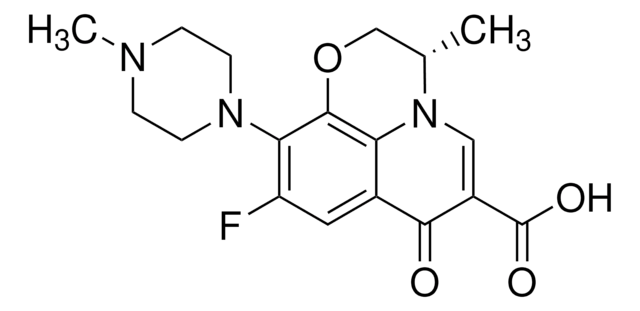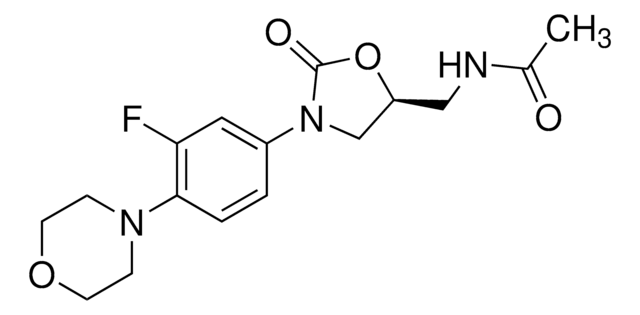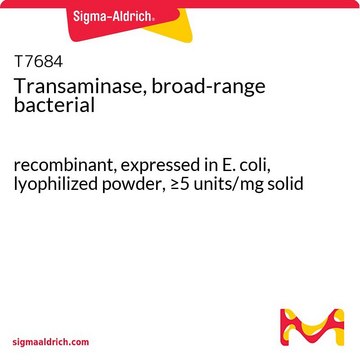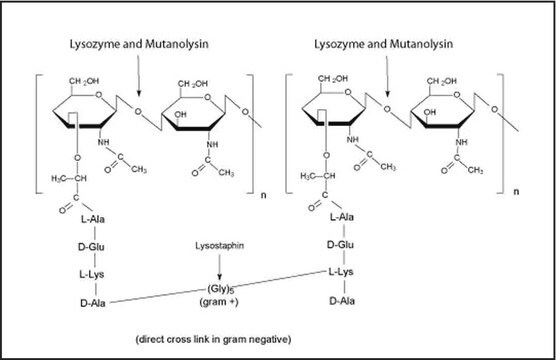45299
Epoxide Hydrolase from Rhodococcus rhodochrous
lyophilized powder, beige, ≥0.2 U/g
Sign Into View Organizational & Contract Pricing
All Photos(1)
About This Item
CAS Number:
MDL number:
UNSPSC Code:
12352204
NACRES:
NA.54
Recommended Products
Biochem/physiol Actions
Epoxide hydrolase is an enantioselective catalyst for the hydrolytic kinetic resolution of epoxides.
Unit Definition
1 U corresponds to the amount of enzymes which hydrolizes 1 μmol (S)-NEPC [(2S,3S)-trans-3-phenyl-2-oxiranylmethyl-4-nitrophenyl carbonate, Prod. No. 04088] per minute at pH 8.0 and 25 °C
Other Notes
Asymmetric hydrolysis of epoxides to optically active diols
Signal Word
Danger
Hazard Statements
Precautionary Statements
Hazard Classifications
Resp. Sens. 1
Storage Class Code
11 - Combustible Solids
WGK
WGK 1
Flash Point(F)
Not applicable
Flash Point(C)
Not applicable
Personal Protective Equipment
dust mask type N95 (US), Eyeshields, Gloves
Choose from one of the most recent versions:
Already Own This Product?
Find documentation for the products that you have recently purchased in the Document Library.
Mischitz, M., et al.
Tetrahedron Asymmetry, 7, 2041-2041 (1996)
Hechtberger, P.
Tetrahedron Asymmetry, 4, 1161-1161 (1993)
E N Jacobsen
Accounts of chemical research, 33(6), 421-431 (2000-07-13)
The discovery of the metal salen-catalyzed asymmetric ring-opening (ARO) of epoxides is chronicled. A screening approach was adopted for the identification of catalysts for the addition of TMSN(3) to meso-epoxides, and the chiral (salen)CrN(3) complex was identified as optimal. Kinetic
Ana W Y Cheong et al.
Biology of reproduction, 81(1), 126-132 (2009-03-27)
Somatic cell-embryo coculture enhances embryo development in vitro by producing embryotrophic factor(s) and/or removing harmful substances from the culture environment. Yet, the underlying molecular mechanisms on how somatic cells remove the toxicants from the culture medium remain largely unknown. By
Zhuo Shao et al.
Arteriosclerosis, thrombosis, and vascular biology, 34(3), 581-586 (2014-01-25)
Regulation of angiogenesis is critical for many diseases. Specifically, pathological retinal neovascularization, a major cause of blindness, is suppressed with dietary ω3-long-chain polyunsaturated fatty acids (ω3LCPUFAs) through antiangiogenic metabolites of cyclooxygenase and lipoxygenase. Cytochrome P450 epoxygenases (CYP2C8) also metabolize LCPUFAs
Our team of scientists has experience in all areas of research including Life Science, Material Science, Chemical Synthesis, Chromatography, Analytical and many others.
Contact Technical Service







